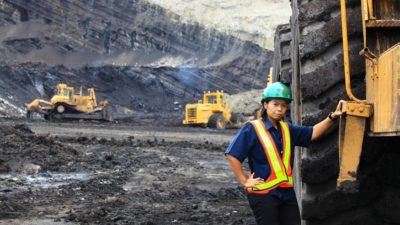Recent moves by Chinese authorities to stabilise the country's property market appear to have left investors unimpressed, triggering a selloff in ASX 200 iron ore shares last week.
This has significant implications for major ASX iron ore majors like BHP Group Ltd (ASX: BHP), Rio Tinto Ltd (ASX: RIO), Mineral Resources Ltd (ASX: MIN), and Fortescue Ltd (ASX: FMG).
You can see a comparison of each stock's performance this year to date in the chart below.
With the pulse of economic stimulus from China reverberating throughout global markets, what does the latest mean for ASX 200 iron ore shares? Let's see.
Iron ore slides as China stimulus disappoints
ASX iron ore shares caught a bid in early October after the Chinese government announced a raft of stimulus measures to buoy the local property market.
Traders and investors suddenly became bullish on the sector and Chinese stocks in general, betting that the government would further intervene with more stimulus activity.
But the excitement was short-lived.
Iron ore prices dropped sharply to a three-week low after China's latest measures to support its struggling property sector failed to impress the market.
The key ingredient used in steelmaking now trades at just under US$105 per tonne.
This is up from September's low of US$89/tonne but well off the year's high of US$144/tonne in January.
Despite announcing plans to expand a program for unfinished housing projects to 4 trillion yuan (around AUD $840 billion), investors didn't continue the buying frenzy.
According to Trading Economics, the fear is that property may not have bottomed in the country.
[M]arkets remained sceptical about the impact of economic support measures from the Chinese government on ferrous metal demand.
Beijing increased the loan quota for eligible property developers, but the lack of direct action from the MoF and PBoC, in addition to the lack of a specific amount of cash to be raised through special bonds, magnified concerns that the property market has yet bottomed.
This was after fresh data showed that housing prices in the country sank by 5.7%, the steepest decline in nearly a decade…
ASX 200 iron ore shares subsequently turned a corner and began to sell off sharply last week.
BHP, for instance, had reached $44 apiece before the second round of stimulus measures were announced.
It finished the session at $42.25 on Thursday, nearly 4% lower since the attempted breakout.
What does this mean for ASX iron ore shares?
A weaker Chinese property market could mean trouble for BHP, Rio Tinto, Fortescue, and Mineral Resources.
Steel is a major material needed in all construction, and iron ore, along with nickel, is the key ingredient in its production.
A slowdown in steel demand has downstream effects on iron ore prices. Iron ore miners make their dollars at whatever price the market dictates.
Analysts had already been adjusting their outlooks on iron ore prior to the stimulus measures announced by China.
In September, Bank of America warned that iron ore prices could dip below US$80 per tonne if demand remained weak.
Commonwealth Bank shared a similar sentiment, seeing an $80 floor as a near-term possibility given China's construction slowdown.
This forecast could have a different impact on each miner's margins. While BHP and Rio Tinto have relatively low break-even prices, around US$45 per tonne, Fortescue's higher break-even point of US$64 per tonne could squeeze its profits more significantly.
Mineral Resources, with a break-even above US$80 per tonne, could face even tighter margins if prices continue to drop.
Foolish takeout
With iron ore prices facing potential downside risks, the outlook for ASX iron ore shares is mixed. Unless construction demand increases, the path is difficult to envision.
Time will tell what eventuates from here. In the meantime, iron ore stocks will likely face continued volatility.







